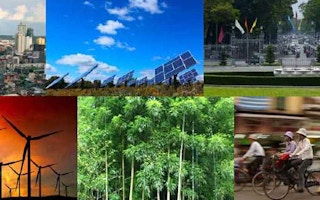The disconnect between project developers and investors is holding back the clean energy market from reaching its fullest potential.
“Project developers with clean energy solutions are saying they have no money while investors with money are saying there are no projects,” said Eugene Tan, managing partner of EOS Investment Partners.
According to Asian Development Bank (ADB), an annual funding of US$280 billion is needed to fund clean energy projects to develop Asia.
“However, only one per cent of the investors’ portfolio is allocated to climate energy”, said Mr. Tan.
He was speaking at Clean Energy Expo Asia 2010, an annual event organised by the Sustainable Energy Association of Singapore (SEAS) and German firm Koelnmesse.
Speakers at the conference noted that the lack of initiative from project developers to generate interest within the investment community and financiers’ limited knowledge in clean energy solutions is undermining the development of the clean economy.
Josh Carmody, fund manager of ADB’s Asia Pacific Carbon Fund, said that the scale demanded of clean energy projects is one of the main obstacles in attracting investors to the project.
“To create the infrastructure and cope with the scale of production is not just the responsibility of multilateral organisations, but also the governments and companies involved,” said Mr. Carmody.
“We need to have trust and confidence to bridge this gap,” said managing director of East Harbour Energy and Energy Library Brain Cox, who has over 30 years of experience working in developing commercial capital investment projects related to energy and infrastructure.
Mr Cox shared a case study of New Zealand’s bio-energy strategy, which invited the government to step in and introduce policies and regulations to bridge the funding gap between project developers and investors.
The project, which converts organic by-products to energy, has led to economic growth and increased employment. It is also expected to supply more than 25 per cent of New Zealand’s energy needs.
Mr Cox believed that the open platform for discussion and government support helped to create an environment attractive to project developers and investors to work in.
From the investors’ point of view, they are influenced by intangible things like the integrity and openness of the community they are working with, explained Mr Cox.
Another similar example shared was India’s progress in leaping to become the fourth largest player in the wind sector, producing 150,000 megawatts from nothing in just six years, after the introduction of tax credits in wind energy investment.
“The economics to invest in wind suddenly became attractive and investment flowed in,” explained Pankaj Sehgal, SUN Group director of alternate energy and technology investments. “Investors are only interested in knowing if their interests are secured and whether they’ll be remunerated for the risk they are taking,” he continued.
Mr. Sehgal added that many investors have virtually no understanding of clean energy projects and find it hard to invest if there is no policy in place to direct them.
As a multilateral organisation, ADB has plans to set up two initiatives: the Climate Public Private Partnership (CPPP) Fund and the Project Development Facility (PDF) to address the disconnect.
The CPPP puts both private and public money together in a large scale, while the PDF oversees the development of budding clean energy projects to ensure it reaches maturity.
“What we’re trying to do is to bring money closer to projects,” said Mr. Tan, who hopes that the initiatives will be implemented within a few years.
However, Mr. Carmody noted that the attitude of project developers and financiers ought to change. “Too many people have feet on their desks and are not going out to the ground to talk to people,” he said.
“For instance, if project developers find their project can’t get adequate returns, they should find similar projects, restructure it, and convince investors of the viability of the project.”
Eco-Business.com’s coverage of the Clean Energy Expo Asia 2010 is brought to you by Conchubar Capital Management.













